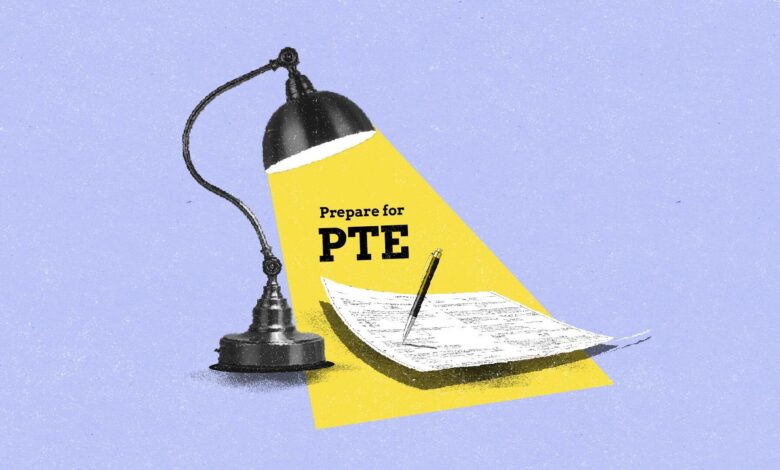PTE Practice Test: The Ultimate Guide to Ace Your Pearson English Exam

Preparing for the PTE Academic Exam can be both exciting and challenging. With thousands of students vying for spots in universities and immigration programs across the globe, the need to score high in the Pearson Test of English (PTE) has never been greater. And one tool that can make or break your success is the PTE practice test.
In this comprehensive article, we’ll walk you through everything you need to know about PTE practice tests, from what they are and how they help, to the best ways to use them effectively in your study plan.
What Is the PTE Academic Exam?
Before we dive into the practice tests, let’s quickly understand what the PTE Academic exam is all about.
The Pearson Test of English Academic is a computer-based English language proficiency exam designed for non-native English speakers. It evaluates your reading, writing, speaking, and listening skills and is accepted by thousands of academic institutions, governments, and professional bodies worldwide.
What sets the PTE apart is its AI-based scoring, rapid results (usually within 48 hours), and completely digital experience—making it a modern, unbiased alternative to other English proficiency exams like IELTS or TOEFL.
What Is a PTE Practice Test?
A PTE practice test is a simulation of the actual PTE exam. It mirrors the structure, question types, difficulty level, and timing of the real test. These tests are designed to give you a hands-on feel of the exam environment, help you evaluate your performance, and identify areas for improvement.
Most PTE practice tests come in two forms:
Full-Length Practice Tests: Replicates the real exam with all sections (Speaking & Writing, Reading, and Listening).
Sectional Practice Tests: Focuses on individual modules to target specific skills (e.g., only listening or speaking).
You can find both free and paid versions of PTE practice tests online, offered by a wide range of platforms including Pearson itself, test prep companies, mobile apps, and educational institutions.
Benefits of Taking a PTE Practice Test
Taking a PTE practice test is not just about answering questions—it’s a powerful strategy for mastering the exam. Here’s why it’s a must for every serious candidate:
1. Understand the Exam Format
The PTE is a unique test that uses AI scoring and integrates different language skills in many of its tasks. A practice test gives you firsthand experience with question types like:
Read Aloud
Repeat Sentence
Write Essay
Summarize Spoken Text
Write from Dictation
By practicing regularly, you become familiar with the test flow, question structure, and timing.
2. Accurate Self-Assessment
Many high-quality practice tests use scoring algorithms that mimic the official PTE scoring system. This helps you understand your current proficiency level and estimate your band score realistically.
3. Identify Strengths and Weaknesses
After taking a practice test, you can analyze your performance in each section. This highlights where you excel and where you need to improve, helping you focus your study time more effectively.
4. Improve Time Management
Each PTE section is timed. Full-length practice tests train you to manage your time efficiently so you don’t run out of time during the actual exam.
5. Boost Confidence
Nothing builds confidence like experience. Regular practice tests reduce exam anxiety and prepare you mentally for test day.
Structure of the PTE Practice Test
To be effective, a PTE practice test must mirror the format of the actual exam. Here’s what you can expect:
✅ Section 1: Speaking & Writing (77–93 minutes)
Read Aloud
Repeat Sentence
Describe Image
Re-tell Lecture
Answer Short Question
Summarize Written Text
Write Essay
✅ Section 2: Reading (32–41 minutes)
Multiple-choice, choose single answer
Multiple-choice, choose multiple answers
Re-order Paragraphs
Fill in the Blanks (Reading)
Fill in the Blanks (Reading & Writing)
✅ Section 3: Listening (45–57 minutes)
Summarize Spoken Text
Multiple-choice, multiple answers
Fill in the Blanks
Highlight Correct Summary
Select Missing Word
Highlight Incorrect Words
Write from Dictation
Each section of the practice test should follow the same time constraints and scoring rubrics as the real PTE exam.
How to Choose the Best PTE Practice Test
With hundreds of practice tests available online, selecting the right one is crucial. Here’s what to look for:
1. Authenticity
The closer the practice test mimics the real exam, the better. Look for platforms that replicate the user interface, timing, and question difficulty of the actual PTE test.
2. AI Scoring
Choose tests that use AI algorithms similar to the official Pearson system. This ensures that your scores are a realistic indicator of your expected performance.
3. Detailed Feedback
Quality platforms provide analytics on your answers, time taken per question, common error types, and even suggestions for improvement.
4. Affordability
While some practice tests are free, paid tests usually offer more comprehensive scoring and analytics. Choose based on your budget and preparation needs.
5. Flexibility
The best platforms offer both full-length and sectional tests so you can customize your practice sessions.
Popular PTE Practice Test Platforms (2025 Edition)
Here are some trusted names offering high-quality PTE practice tests:
| Platform | Features | Price |
| Pearson Official Practice App | AI Scoring, Real Exam Simulation | Paid |
| E2Language | Teacher Feedback, Tutorials, Mock Tests | Free & Paid |
| PTE Tutorials | Sectional Tests, AI Scoring | Free & Paid |
| ApeUni | Free Tests, Community Support | Mostly Free |
| PTE Practice.com | Smart Analytics, Scoring Reports | Paid |
| PTE Master | App-Based, Voice Analysis | Affordable |
How to Use PTE Practice Tests Effectively
Taking a practice test is just step one. What you do afterward is what truly matters. Here’s a smart study plan to make the most of your practice tests:
✅ Step 1: Simulate Exam Conditions
When taking the test, sit in a quiet room, use a headset with a mic, and follow the official time limits. Treat it like the real exam.
✅ Step 2: Analyze Your Score
Don’t just focus on the final score. Break down your performance in each section. Look at the types of questions you missed and try to understand why.
✅ Step 3: Track Your Progress
Maintain a log of all your practice test scores, common mistakes, and areas that need improvement. This helps you identify patterns over time.
✅ Step 4: Focus on Weak Areas
Once you know your weaknesses (e.g., grammar, pronunciation, vocabulary), practice them using dedicated resources like apps, grammar guides, or language partners.
✅ Step 5: Revisit the Same Practice Test
After a few weeks, retake the same test. See if your scores improve. This shows whether your preparation strategies are working.
Common Mistakes to Avoid During PTE Practice Tests
To get the most value from practice tests, avoid these pitfalls:
Ignoring Feedback: Always analyze your results instead of jumping to the next test.
Skipping Sections You Don’t Like: Weak sections need more attention, not avoidance.
Not Practicing Speaking Aloud: Speaking into the mic is essential. Practice with a headset to simulate test conditions.
Guessing Without Strategy: Use elimination techniques even in practice.
Taking Too Many Tests Too Fast: Focus on quality over quantity. Reflect and revise between tests.
How Many Practice Tests Should You Take?
There’s no magic number, but here’s a rough guide:
Beginner: 3–5 full tests + multiple sectional practices
Intermediate: 5–8 full tests + daily speaking/writing drills
Advanced: 8–12 full-length mock tests with analytics
What matters more than quantity is how well you use the feedback from each test to improve.
Final Week: How to Use PTE Practice Tests Before the Real Exam
Your last week before the PTE exam is critical. Here’s how to use practice tests wisely:
Day 7–5: Take a full-length test and analyze the results thoroughly.
Day 4–3: Focus on your weak sections with targeted practice.
Day 2: Take another full test to build stamina.
Day 1: Light revision and rest. No full test. Practice a few speaking prompts and relax.
Real-Life Success Stories
Priya, a student from India, scored 87 on her PTE Academic after 2 months of dedicated practice.
“I took about 10 full-length PTE practice tests. Initially, I scored 60, but through feedback and focused improvements, my score kept rising. Mock tests helped me beat anxiety and build confidence.”
Ahmed from UAE shared,
“The PTE practice tests helped me understand my pronunciation issues and timing. The analytics showed me where I was going wrong. Eventually, I scored 79 and got into my dream university.”
These stories prove that practice tests can bridge the gap between hope and success.
Conclusion: Practice Tests Are the Key to PTE Success
The PTE practice test is more than a rehearsal—it’s your passport to mastering the exam. It helps you familiarize yourself with the format, improve your skills, and evaluate your readiness in a stress-free environment.
So, whether you’re just beginning your PTE journey or are in the final stages of preparation, make practice tests a core part of your strategy. Practice smart, analyze deeply, and watch your scores soar.
Ready to begin? Start your first PTE practice test today and take a confident step toward your international goals.




